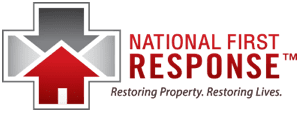Contact Us
Understanding Water Damage: What happens?
Finding water damage in your home or business can be a major disruption in your life. When a pipe bursts or a storm hits and you discover water coming into your property it’s stressful, and even a small leak can be a major inconvenience.
Your frustration might increase if you find out that the water damage has made your property unsafe.
Although you may not expect it when it happens, you can be prepared in the case that your property is damaged by water. It’s important to know the common causes of water damage:
- Severe weather (a leaking roof)
- Leaking pipes or water heater
- Washing machine line leak
- Condensation from an air conditioner
- Blocked drains or sewage pipe leak
- Malfunctioning sprinkler systems
If water damage goes untreated, more extensive damage can occur, including warped floors, discolored paint, and a weakened building foundation. Because water will begin to immediately harm your property structure, interior furnishings, and personal belongings, it is important to act fast when you discover water damage in your home.
If water damage is not treated quickly and correctly, your property and belongings will not only be damaged or ruined but the risk of mold growth increases.
Water inside your home and property will create perfect conditions for mold spores to grow. Within 24 hours of a flood in your home or business insidious mold spores can spread quickly, traveling airborne, even to areas of your property unaffected by the water damage.
Mold grows under cabinets, in carpets, and behind walls, not only endangering your property but also your health. Mold exposure can cause a stuffy nose, difficulty breathing or shortness of breath, headaches, or irritated eyes and skin. Those are risk of serious health problems from toxic mold exposure include immune-compromised individuals, people with asthma, pregnant women, infants, and the elderly.
The presence of toxic mold impacts property value, especially if not properly addressed.
Water Damage Restoration and Toxic Mold Remediation Process
The first action you should take after discovering water damage in your home or property should be to call restoration professionals, National First Response who will work with you and your insurance to get your property and your life back to normal.
First, the source of the water will need to be identified and stopped from creating more damage.
Next, water-damaged items may need to be removed, such as drywall, flooring, cabinets, and furnishings, and the property structure will be thoroughly dried.
Then your personal property and furnishings damaged by water will be restored through cleaning, repairing, and treatment.
If mold is present, tools such as a moisture meter and a humidity gauge will be used to assess the severity of the outbreak. After the source of the moisture is determined, the outbreak will be isolated from unaffected areas and moisture levels will be quickly reduced to stop the mold from spreading. Porous items that have high moisture readings will need to be removed, including drywall, carpet, and furniture. To kill the mold spores and create a lasting barrier so the mold does not return a fungicide will be used.
In a stressful situation like discovering water damage in your home or business, National First Response is here to walk you through the restoration process and get your property back to its original condition, if not better than before.
Quote from Leah’s interview: “National First Response was concerned about what I was concerned about, they were available by phone, and they worked with me and my family to be able to feel comfortable in a uncomfortable situation.”
